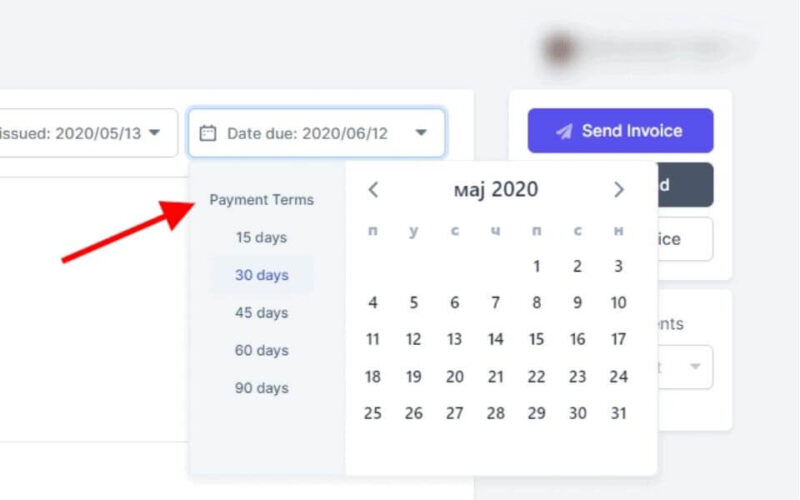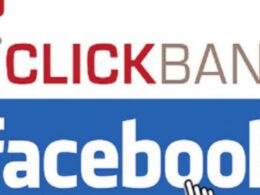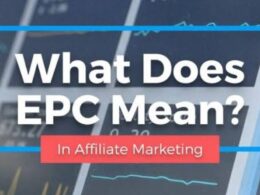The Net 30 payment term is one of the most frequently used payment terms. It is a popular option that can be used to sort payments in various monetization methods. The use of Net 30 payment terms is more relevant for websites that monetize via affiliate marketing or display advertising. Chances are that as an affiliate marketer, you’ve come across this type of payment schedule.
What is Net 30?
In the normal business world, businesses often offer clients the Net 30 terms. When they do this, they are simply offering the client the chance to make payment at a later date. Usually, the payment term means clients can pay businesses for up to 30 calendar days after the purchase of a product or service.
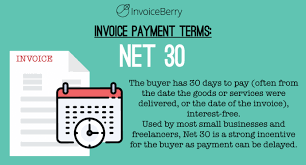
The payment term is considered as a type of trade credit. In other words, when you agree to it, you’re technically lending someone money. While Net 30 can be used with a discount as an incentive for early payment, it can also be used without any discounts being offered.
Businesses deliver goods and services to a client and keep track of the payment they owe you using your accounts receivable. And at the end of 30 days, clients pay for the product or service rendered. Net 30 isn’t the only kind of trade credit a business can extend to its clients. Other forms are the net 10, 14, 15, 30, and 60 which are also common.
Net 30 in Affiliate Marketing

In affiliate marketing, the Net 30 payment term works with the same principle. Under a Net 30 contract, the advertiser (merchant) is expected to submit payment to the publisher (affiliate marketer) within 30 days of receipt of the invoice.
To put things in perspective, consider an invoice for advertising during the month of April. If the invoice was sent in on May 1, payment would be due by May 31 i.e., 30 days after May 1.
The Net 30 isn’t the only payment option of this design. Some similarly named payment terms reflect the various amounts of time between the end of the period and the due date. For instance, under a net 60 contract, any balances would be due 60 days after the invoice was received. In the previous April example, payment would be due on June 30.
For example, QuickBooks invoices for a period ended March 31 with Net 30 payment terms would be due on April 30 (even if the invoice was not sent until a few days later).
This may cause a discrepancy of a few days between reports pulled from accounting systems and the actual due date. In practice, there should be minimal concern over these differences (more on this in the Premium section below).
Are Net 30 Terms Right For Your Affiliate Marketing as a Merchant?
Many small businesses that intend to scale up often figure out that the benefits of offering Net 30 terms far outweigh the setbacks.
However, the general conclusion is not applicable to every business. Not every business can afford to wait 30 days for payment. In such instances, you can use net 10 or net 15, but keep in mind that any time you offer credit to your customers, there’s a chance that you won’t receive payment on time, or at all.
On the flip side, offering credit terms to your customers can help scale up your business and your customer base. The key here is to thoroughly consider which customers you offer credit terms to. Chances are that offering Net 30 payment terms can be a wise decision for your business.
Benefits of using the Net 30 payment terms
The fact is that affiliate marketing has its own challenges and offering your clients a Net 30 payment term can be tricky as well. If you’re still doubtful about offering credit terms, then consider some of the advantages of using Net 30 payment terms:
Expands your customer base

Offering Net 30 terms with your affiliate marketing strategy can help to grow your customer base exponentially. This is simply because the 30-day payment option appeals to many customers. Especially customers with cash flow problems of their own.
Offers a strong incentive for your customers
By offering the Net 30 payment terms, it becomes much easier for your customers to put your invoice through their normal processes. The good part is they still make payment within the 30-day time frame specified on the invoice.
Let’s you add an early payment discount
The most effective manner to induce early pay from clients is to offer an early payment discount. And by including a discount for early payment into your Net 30 terms, you can get your clients to pay faster.
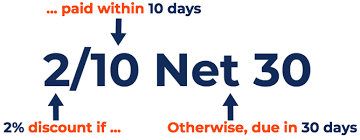
For instance, you can offer a 2% discount to customers who pay early. All you have to do is to change the billing term to 2/10 Net 30.
This means that if your customer pays within 10 days of the invoice date, they get a 2% discount. If they choose not to pay early, the invoice is due at the net amount within 30 days of the invoice date.
Helps your business remain competitive
Net 30 is popular so chances are that businesses in your industry are using it as well. This makes it harder to stay competitive if you still insist on payment up-front. Offering credit terms to your customers can help your business remain competitive. It’s important to keep in mind that not every business is healthy enough to offer Net 30 terms.
Builds customer loyalty
If you offer credit terms to your customers, you can build trust and loyalty over time. Also, you might even be creating a lifetime customer for your business.
Disadvantages of using Net 30 payment terms
Offering Net 30 terms to your customers has some incredible advantages for your business. But as with everything good, so is there a not too pleasant side that we want to be conversant off. Net 30 payments have their own downside and this should seriously be considered before integrating it with your business especially if you plan to offer it alongside affiliate marketing:
Can create cash flow problems

The number one drawback of Net 30 is that it can lead to a cash flow problem. If your business has limited cash flow or you rely on cash to run aspects of your business cycle daily. Then you should reconsider offering Net 30 terms to your customers.
Small businesses with a limited cash flow margin may find it difficult to wait 30 days for payments from their customers. If you feel you must offer credit terms to remain competitive, the net 10 or net 15 is a better option for you.
Discounts create thinner profit margins
By attaching a discount to Net 30 terms, your profit margin will reduce accordingly. This boils down to the health of the business. If your business is healthy enough to reduce profit margin, then all is well. But, if your business relies on a paper-thin profit margin, applying a discount to your Net 30 terms is unadvisable.
Can create additional work
The Net 30 payment terms can create an extra workload for you as a business owner. It requires time and extra work to invoice a customer, post a discount (if and when offered) and record a customer payment. There is also the possibility of having to follow up with late-paying customers as well as handling collections.
If you have the staff and the time to do this, great, but if not, it may be better to continue using your current payment arrangements.
possibly lead to Delinquent accounts
No matter how diligently you do your research, in reality, you’re going to have delinquent accounts. Late payments lead to a lot of extra work as described above and sometimes with all the extra work, they still may never pay. And as a business owner, you have to be prepared for that.
Are Net 30 Terms Right For Your Affiliate Marketing as a Publisher?
As we have come to know, Net 30 as a payment term means that payment is due 30 days after you send your clients the invoice. From this statement, we can easily conclude that the payment terms are favorable to merchants with loads of cash low. Also, the payment term equally favors a customer who is experiencing cash flow restrictions as it offers a relaxed payment period.
How then does the Net 30 payment term stand with the affiliate publisher? Read on to find out more.
When should you Consider Net 30 as an Affiliate Publisher
Net 30 payment terms are great, especially from the view of a business owner. Accounting-wise, it makes more sense for an affiliate merchant to hold on to payment longer. This becomes necessary if the business has been offering these payment terms to its customers. Holding on to the affiliate publishers’ pay then serves as means to balance the books.
But as an affiliate publisher, an instance, where you should accept the Net 30 as a payment method, is few:
When you can afford too

Sometimes an affiliate publisher can afford to wait for 30 days before receiving payment from the merchant. This can occur when the project and its resultant payment are small. In this instance, then payment after 30 days doesn’t affect a publisher’s budget.
Another instance where an affiliate publisher can afford to accept the Net 30 terms is when the publisher is self-sufficient. This simply means that the publisher’s current financial situation is impressive enough to differ a medium-sized payment for 30 days.
Applying the Net 30 terms to all your dealing s an affiliate publisher will affect your earnings tremendously albeit for a 30 day period. And since we are all subject to the laws of nature, unexpected expenses can arise. With that said, always keep in mind that even if you can afford to wait 30 days, you probably shouldn’t accept it every time.
When you trust your Merchants

The Net 30 payment terms rely on the principle of trust to work smoothly. And as it’s quite impossible to trust new merchants, you as an affiliate publisher should not accept the Net 30terms when dealing with merchants for the first time. This is simply because you can’t tell how they operate or if they will remain true to their end of the deal.
On the flip side, it becomes easy to accept the payment terms from a long-term client. This is because you’ve worked with such merchants before; you enjoy working with them and have developed a healthy business relationship over the years. In this instance, trust has been built over several business dealings. And accepting a such term agreement with such clients shouldn’t be difficult.
A key point to remember is that even though you trust your affiliate merchant to accept a Net 30 agreement, if you can’t afford it, then you shouldn’t. Give preference to your own financial stability first before considering the payment term.
When you want to control your pay-out frequency
Net 30 payment terms can help affiliate publishers control the inflow of cash from various merchants. Mostly, merchants pay affiliate publishers at the end of every month. This means a publisher would receive his/her earnings from different merchants almost at the same time.
But by implementing the payment term, publishers can space out payments from different merchants. This spacing helps a publisher create a smooth cash flow of earnings spread across a month rather than receiving all payments at once. A net 15, 60, or 90 can also achieve this kind of result.
Cons of Using Net 30 as an Affiliate Publisher
The disadvantages of using the Net 30 payment term as an affiliate publisher are very much similar to that of a merchant. The only difference now is that the merchant is now playing god with your earnings.
It will hurt your budget

One reason most publishers go into affiliate marketing is to augment their budget. The reality is that as an affiliate publisher, your financial stability is probably not that too impressive and you can’t afford to wait 30 days before getting paid.
Oftentimes, affiliate publishers require payment as soon as possible. You most likely have financial obligations that you need to perform regularly such as paying your bills, investing in your education, mortgage, health, and others.
Merchants tend to pay at the very end or late
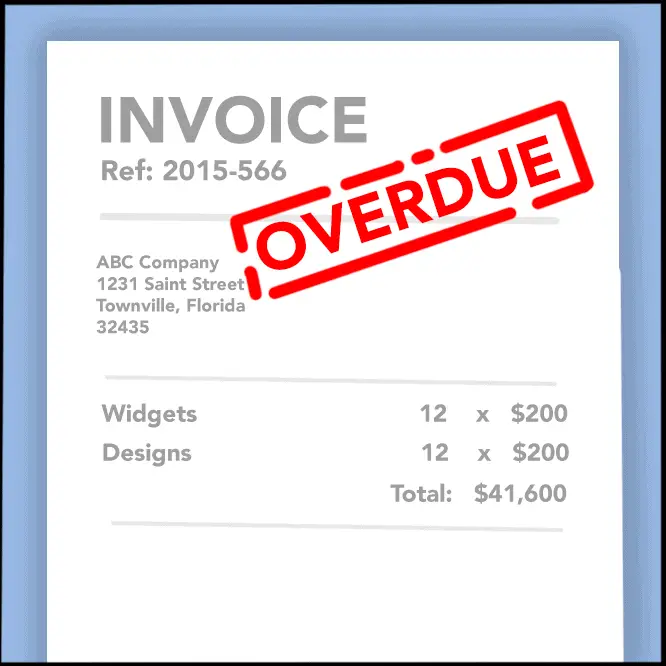
Sadly, the reality is that telling a merchant to “pay me in 30 days max” will mostly result in “paying you in 30 days at the earliest”. This is because the term allows merchants to keep their cash longer which improves cash flow on their end.
Many previously attribute late payment in Net 30 to laziness on the part of merchants. But now realize that it’s actually been used as a profitable financial decision by merchants. Since most likely they are a bigger business, they profit from paying you later since they can make interests off your payment.
The ambiguity of Net 30 can lead to confusion

The payment term has ambiguity in it. There are divided opinions as to when it starts counting. In general, it will begin from the date when the invoice is issued.
However, not everyone is aware of this. Often time, most merchants think the 30 days begin from when they actually receive the invoice. More disturbing is if your merchant works for a bigger client. They might assume that net 30 starts counting when they receive their payment themselves.
Conclusion
The Net 30 payment term is popular in affiliate marketing. Affiliate merchants use it to grow their business by attracting new customers with their relaxed pay terms. They also incentivize it to induce early payment from clients as well.
Another advantage of the payment term is that merchants can hold and use your money to earn interest for themselves. This allows merchants to control the money paid to them by their clients for longer periods of time before making payment to the publisher. This is only advantageous from the merchant’s viewpoint.
This doesn’t mean Net 30 payment isn’t advantageous to publishers. Affiliate publishers can take advantage of the 30 day waiting period to help them space out payments from different merchants.






